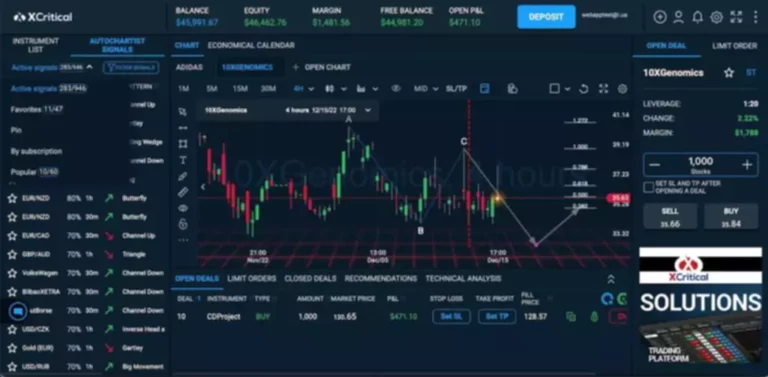Content
This could potentially lead to price manipulation and unfair trading practices. The SEC rule 606 requires all brokers disclose the presence of order flow agreements to customers and update their data through filing disclosures that specify who they received order flow payments from and how much. Many brokers will “spin” the cost savings and “price improvements” they pass down to their customers as a result of order flow agreements. Banking services and bank accounts are offered by Jiko Bank, a division of Mid-Central National Bank.JSI and pfof meaning Jiko Bank are not affiliated with Public Holdings, Inc. (“Public”) or any of its subsidiaries. You should consult your legal, tax, or financial advisors before making any financial decisions. This material is not intended as a recommendation, offer, or solicitation to purchase or sell securities, open a brokerage account, or engage in any investment strategy.
Do competing specialists and preferencing dealers affect market quality?
Investors should always be https://www.xcritical.com/ aware of whether or not a broker is using PFOF and selling your trade orders to a market maker. The market makers execute the trade, and gives the brokerage a tiny portion of the trade value as a way to thank the brokerage for sending business their way. Some—including SEC chair Gary Gensler—floated a potential ban of the practice.
- This influx of trades increases their order book depth, potentially allowing them to widen the bid-ask spread — which translates to higher profits.
- This is a bracket, which represents the highest prices buyers are willing to pay, the bid, and the lowest prices sellers are willing to sell, known as the ask price.
- Changes in the complexity of trades involving equity, options, and cryptocurrency have come about as exchanges and electronic communication networks have proliferated.
- However, according to the SEC, brokerages have a fiduciary duty to offer investors the best possible price.
- PFOF is a common practice among options trading and is becoming more common with stock exchange trades.
- Despite the controversy, payment for order flow has become increasingly popular among online brokers, with Robinhood reportedly generating most of its revenue from this source.
What Is an Introducing Broker-Dealer? Definition and Examples
However, Canadian brokerages are allowed to receive payment for order flow on non-Canadian listed securities, such as US listed securities. And even if it’s paying the broker half a cent per share in exchange for routing its orders, it’s still making a great profit. Founded in 1993, The Motley Fool is a financial services company dedicated to making the world smarter, happier, and richer. Investment Plans (“Plans”) shown in our marketplace are for informational purposes only and are meant as helpful starting points as you discover, research and create a Plan that meets your specific investing needs. Plans are self-directed purchases of individually-selected assets, which may include stocks, ETFs and cryptocurrency.
Start Trading with Confidence at TIOmarkets
Market makers are licensed and regulated and play an essential role in the stock market by providing liquidity, setting bid-ask spreads, facilitating the exchange of securities, and managing order flow. In the world of Canadian financial markets, the concept of Payment for Order Flow (PFOF) has garnered significant attention and generated its fair share of confusion among retail investors. Many individuals and news outlets believe that payment for order flow is banned in Canada, but that is not exactly the case.
Most Famous PFOF and Non-PFOF Brokers

Plans are not recommendations of a Plan overall or its individual holdings or default allocations. Plans are created using defined, objective criteria based on generally accepted investment theory; they are not based on your needs or risk profile. You are responsible for establishing and maintaining allocations among assets within your Plan.
Payment for order flow is prevalent in equity (stock) and options trading in the U.S. But it’s not allowed in many other jurisdictions, such as the U.K, Canada, and Australia. In early 2023, the European Union announced a planned phaseout of PFOF in member states that currently allow the practice. The practice is perfectly legal if both parties to a PFOF transaction execute the best possible trade for the client.
However, order flow arrangements empower market makers with the additional liquidity to bundle large orders, deal from inventory and take the opposite sides of trades to buffer exposure risk. Retail investors can use marketable orders for immediate trades at the best current available price. In December 2022, the SEC proposed a rule to enhance competition for individual investor order execution to address this estimated $1.5 billion annual concern. Payment for order flow is the compensation received in exchange for routing client trade orders to a market maker.
In the PFOF model, the investor starts the process by placing an order through a broker. The broker, in turn, routes this order to a market maker in exchange for compensation. The market maker then executes the order, aiming to profit from the spread or other trading strategies. New investors are flowing into the stock market in record numbers, fueled by online trading apps that offer commission free trading, borrowing on margin, and options trading. In fact, one important revenue stream almost tripled for four large brokers from 2019 to 2020.
Brokerage customers can ask for payment data for specific transactions from their brokers, though it could take weeks to get a response. Regulation NMS, through its Rules 605 and 606, also requires broker-dealers to make two reports available, one to disclose the execution quality and the other to give the payment for order-flow statistics. Nevertheless, brokers have a strong incentive to encourage more options trading, especially in a zero-commission trading environment. According to a 2022 study, which is in line with similar reporting and studies, about 65% of the total PFOF received by brokers in the period studied came from options.
Broker-dealers are required to regularly review their client orders and where they are getting the most favorable execution. One vendor (market maker) says they’ll personally pay you a penny if you send him the order. Third parties often trade against your order, meaning you get filled on the long position moments before the price collapses or wiggles lower. This is such a common occurrence that traders are often convinced stocks will drop as soon as they make their entry and thus hesitate until FOMO (fear of missing out) prompts them to chase an entry at the top. Institutions may pay for order flow to bundle and arbitrage large block orders while still adhering to the National Best Bid Offer (NBBO) parameters. These entities are paying for liquidity to fill their own trades rather than outsource to liquidity providers.

Brokerages and market makers have pre-existing contracts in place, whereby market makers pay brokerages a commission for sending their trade orders to them, instead of the exchanges. Taken all together, brokerages make money from these contracts, market makers produce profit inside the bid-ask spread and the investor… loses value in their portfolio. Payment for order flow (PFOF) refers to the practice of retail brokerages routing customer orders to market makers, usually for a small fee. Payment for order flow is controversial, but it’s become a key part of financial markets when it comes to stock and options trading today. When you enter a trade, your broker passes the order to one of many market makers for execution.
If PFOF is important to you and you decide to trade (or avoid) a PFOF broker, then here is a list of the most popular brokers that use PFOF (in the US). Payment for Order Flow and Best Execution are two distinct concepts in the world of finance. Understanding their differences is vital for investors looking to make informed decisions about their trading activities. All we do know is that a PFOF ban will most likely hurt the retail investor. Now if you are selling an apple for a client, wouldn’t it be better if there was more competition? We want them to fight for the right to purchase our apple, thus making the spread tighter.
For the time being, payment for order flow agreements are legal as long as they are disclosed and updated quarterly. There is much controversy about the ramifications of order flow arrangements. Market orders are the most profitable as third parties can really capitalize on the 10,000ths of a penny per 0.01 spread.
